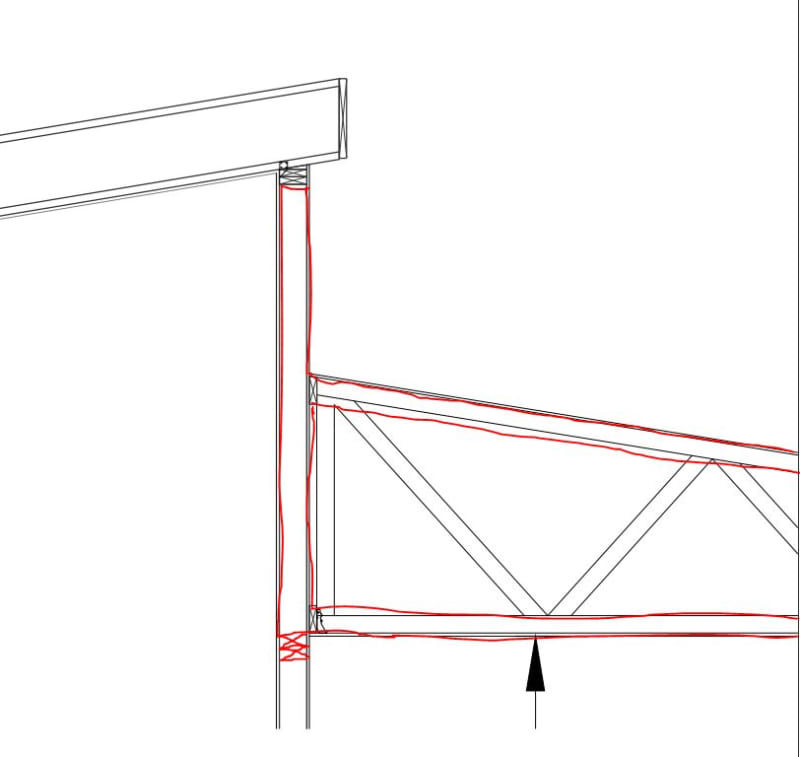JStructsteel
Structural
Since im on a roll here, whats the better detail for a truss bearing on a shear wall? Got a high-low roof, lower trusses frame into shear wall. To keep shear wall continuous, I was going to provide ledger board w/ truss hanger. My second thought is split the wall, double top plate for truss bearing, then wall on top of truss to high roof. This seems alot of work, plus the side i have sheathing would be in the truss.
Here is my preferred detail:

Here is my preferred detail:


